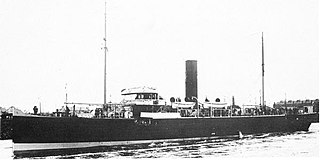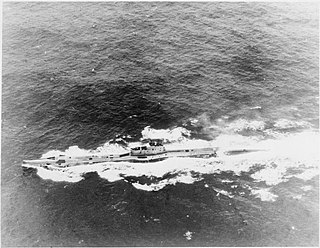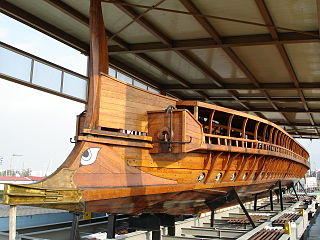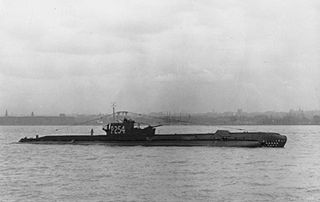
In sailing vessels, the head is the ship's toilet. The name derives from sailing ships in which the toilet area for the regular sailors was placed at the head or bow of the vessel.

In sailing vessels, the head is the ship's toilet. The name derives from sailing ships in which the toilet area for the regular sailors was placed at the head or bow of the vessel.
This section needs additional citations for verification .(May 2014) |
In sailing ships, the toilet was placed in the bow somewhat above the water line with vents or slots cut near the floor level allowing normal wave action to wash out the facility. Only the captain had a private toilet near his quarters, at the stern of the ship in the quarter gallery.
The plans of 18th-century naval ships do not reveal the construction of toilet facilities when the ships were first built. The Journal of Aaron Thomas aboard HMS Lapwing in the Caribbean Sea in the 1790s records that a canvas tube was attached, presumably by the ship's sailmaker, to a superstructure beside the bowsprit near the figurehead, ending just above the normal waterline.
In many modern boats, the heads look similar to seated flush toilets but use a system of valves and pumps that brings sea water into the toilet and pumps the waste out through the hull (in place of the more normal cistern and plumbing trap) to a drain. In small boats the pump is often hand operated. The cleaning mechanism is easily blocked if too much toilet paper or other fibrous material is put down the pan.
Submarine heads face the problem that at greater depths higher water pressure makes it harder to pump the waste out through the hull. As a result, early systems could be complicated, with the head fitted to the United States Navy S-class submarine being described as almost taking an engineer to operate. [1] Making a mistake resulted in waste or seawater being forcibly expelled back into the hull of the submarine. [1] This caused the loss of German submarine U-1206.
The toilet on the World War I British E-class submarine was considered so poor by the captain of HMS E35 that he preferred the crew to wait to relieve themselves until the submarine surfaced at night. [2] As a result, many submarines only used the heads as an extra storage space for provisions. [2]
Aboard sailing ships and during the era when all hands aboard a vessel were men, the heads received most of their use for defecation; for routine urination, however, a pissdale was easier to access and simpler to use.

A submarine is a watercraft capable of independent operation underwater. It differs from a submersible, which has more limited underwater capability. The term is also sometimes used historically or colloquially to refer to remotely operated vehicles and robots, as well as medium-sized or smaller vessels, such as the midget submarine and the wet sub. Submarines are referred to as boats rather than ships irrespective of their size.

Q-ships, also known as Q-boats, decoy vessels, special service ships, or mystery ships, were heavily armed merchant ships with concealed weaponry, designed to lure submarines into making surface attacks. This gave Q-ships the chance to open fire and sink them. The use of Q-ships contributed to the abandonment of cruiser rules restricting attacks on unarmed merchant ships and to the shift to unrestricted submarine warfare in the 20th century.

A warship or combatant ship is a ship that is built and primarily intended for naval warfare. Usually they belong to the armed forces of a nation. As well as being armed, warships are designed to withstand damage and are typically faster and more maneuverable than merchant ships. Unlike a merchant ship, which carries cargo, a warship typically carries only weapons, ammunition and supplies for its crew. Warships usually belong to a navy, though they have also been operated by individuals, cooperatives and corporations.

The Flower-class corvette was a British class of 294 corvettes used during World War II by the Allied navies particularly as anti-submarine convoy escorts in the Battle of the Atlantic. Royal Navy ships of this class were named after flowers.

HMS Triumph (N18) was a T-class submarine of the Royal Navy. She was laid down by Vickers at Barrow-in-Furness and launched in 1938. The boat was lost in transit in 1942, with a crew of 64, and its fate was unknown until the sunken boat was rediscovered in June 2023.
This glossary of nautical terms is an alphabetical listing of terms and expressions connected with ships, shipping, seamanship and navigation on water. Some remain current, while many date from the 17th to 19th centuries. The word nautical derives from the Latin nauticus, from Greek nautikos, from nautēs: "sailor", from naus: "ship".

Capsizing or keeling over occurs when a boat or ship is rolled on its side or further by wave action, instability or wind force beyond the angle of positive static stability or it is upside down in the water. The act of recovering a vessel from a capsize is called righting. Capsize may result from broaching, knockdown, loss of stability due to cargo shifting or flooding, or in high speed boats, from turning too fast.

In warfare, ramming is a technique used in air, sea, and land combat. The term originated from battering ram, a siege weapon used to bring down fortifications by hitting it with the force of the ram's momentum, and ultimately from male sheep. Thus, in warfare, ramming refers to hitting a target by running oneself into the target.

HMS Affray was a British Amphion-class submarine. It was the last Royal Navy submarine to be lost at sea, on 16 April 1951, with the loss of 75 lives.

The British U-class submarines were a class of 49 small submarines built just before and during the Second World War. The class is sometimes known as the Undine class, after the first submarine built. A further development was the British V-class submarine of 1942.

A ram was a weapon fitted to varied types of ships, dating back to antiquity. The weapon comprised an underwater prolongation of the bow of the ship to form an armoured beak, usually between 2 and 4 meters (6–12 ft) in length. This would be driven into the hull of an enemy ship to puncture, sink or disable it.

The harbour defence motor launch (HDML) was a 72 ft (22 m) long British-designed motor vessel used for harbour defence during World War II. Nearly 500 were built by numerous Allied countries during the war.

HMS Selene was a S-class submarine of the third batch built for the Royal Navy during World War II. She survived the war and was sold for scrap in 1961.

USS Constitution vs HMS Guerriere was a battle between an American and British ship during the War of 1812, about 400 miles (640 km) southeast of Halifax, Nova Scotia. It took place on the 19th of August 1812, one month after the war's first engagement between British and American forces. Guerriere was proceeding to Halifax for a refit, having been detached from a squadron which had earlier failed to capture Constitution. When the two ships encountered each other on August 19th, Guerriere's Captain James Richard Dacres engaged, confident of victory against the larger, better-armed U.S. ship. The exchange of broadsides felled Guerriere's masts and reduced the ship to a sinking condition. Constitution's crew took the British sailors on board and set Guerriere on fire, then returned to Boston with news of the victory, which proved to be important for American morale.
The Hrabri class consisted of two submarines built for the Kingdom of Serbs, Croats and Slovenes – Yugoslavia from 1929 on – by Vickers-Armstrong in the United Kingdom. Launched in 1927, the boats were named Hrabri (Brave) and Nebojša (Fearless). Their design was based on that of the British L-class submarine of World War I, and they were built using parts from L-class submarines that were never completed. The Hrabri-class were the first submarines to serve in the Royal Yugoslav Navy (KM), and after extensive sea trials and testing they sailed from the UK to the Adriatic coast of Yugoslavia, arriving in April 1928. They were armed with six bow-mounted 533 mm (21 in) torpedo tubes, two 102 mm (4 in) deck guns, one QF 2-pounder L/39 anti-aircraft gun and two machine guns. Their maximum diving depth was restricted to 55 metres (180 ft) by Yugoslav naval regulations.
Ernest Martin Jehan DSC was a British officer in the Royal Navy during the First World War. Jehan is best known for the sinking of a German U-boat by him and his crew aboard the smack Inverlyon. He began the war as a warrant officer and was decorated and commissioned after sinking SM UB-4 (2).
German submarine U-652 was a Type VIIC U-boat of Nazi Germany's Kriegsmarine during World War II. The submarine was laid down on 5 February 1940 at the Howaldtswerke yard at Hamburg, launched on 7 February 1941, and commissioned on 3 April 1941 under the command of Oberleutnant zur See Georg-Werner Fraatz.

A ship's boat is a utility boat carried by a larger vessel. Ship's boats have always provided transport between the shore and other ships. Other work done by such boats has varied over time, as technology has changed. In the age of sail, especially for warships, an important role was the collection of drinking water. The use of radio, followed by telex, e-mail, etc. has reduced and then replaced the need for written communications to be delivered. A large enough boat may be needed to carry an anchor to some distance away from the ship, so as to kedge out of a harbour or away from a hazard – and also to recover such an anchor afterwards. Warships have always used their boats as an extension to their military role. This includes the provision of a means of escape for the crews of fireships, the landing of troops, or the "cutting out" raids that were used by the Royal Navy, especially during the Napoleonic Wars. All these requirements competed with the need to be able to stow the boats on board in a way that did not interfere with the normal operation of the ship.

Ballast is dense material used as a weight to provide stability to a vehicle or structure. Ballast, other than cargo, may be placed in a vehicle, often a ship or the gondola of a balloon or airship, to provide stability. A compartment within a boat, ship, submarine, or other floating structure that holds water is called a ballast tank. Water should move in and out from the ballast tank to balance the ship. In a vessel that travels on the water, the ballast will remain below the water level, to counteract the effects of weight above the water level. The ballast may be redistributed in the vessel or disposed of altogether to change its effects on the movement of the vessel.
This glossary of nautical terms is an alphabetical listing of terms and expressions connected with ships, shipping, seamanship and navigation on water. Some remain current, while many date from the 17th to 19th centuries. The word nautical derives from the Latin nauticus, from Greek nautikos, from nautēs: "sailor", from naus: "ship".